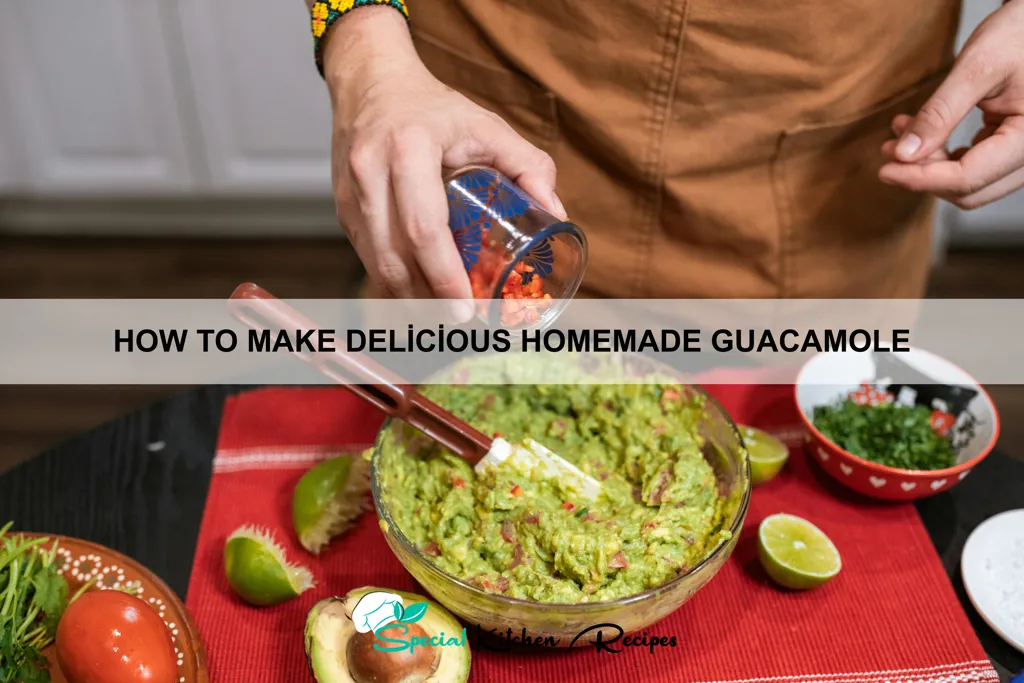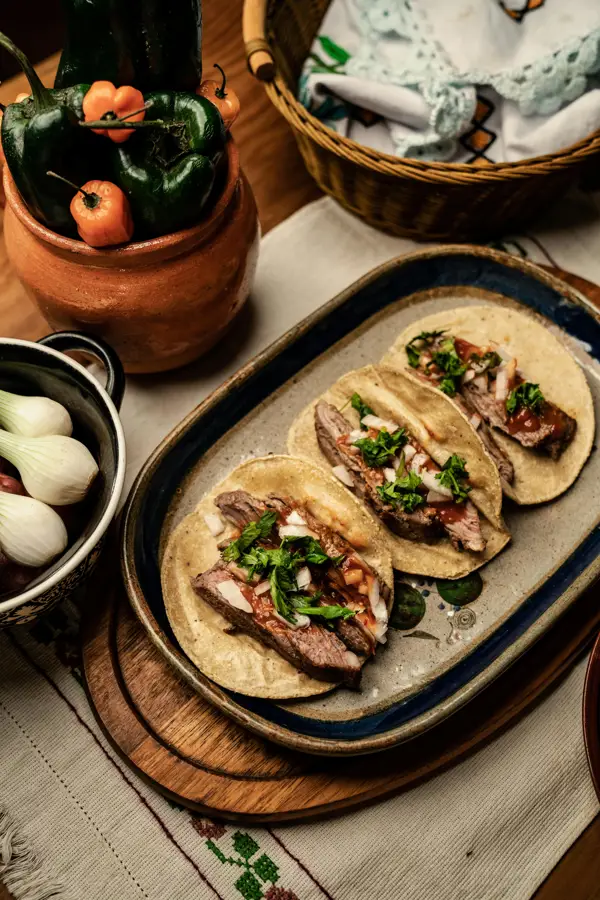Guacamole, the creamy, vibrant green dip synonymous with Mexican cuisine, boasts a history as rich and complex as its flavor profile. While its exact origins are debated, evidence points to its development in pre-Columbian Mexico, possibly as early as the 16th century. Aztec and other indigenous cultures cultivated avocados, the star ingredient, and combined them with various spices and chiles, creating a precursor to the guacamole we know today. Unlike the often-simplified versions found in many restaurants, traditional guacamole recipes varied significantly based on region and personal preference, showcasing the diversity of Mexican culinary traditions.
The word guacamole itself is derived from the Nahuatl word ahuacamolli, meaning avocado sauce. This highlights the deep-rooted connection between the dish and its indigenous origins. The arrival of the avocado in Europe during the 16th century, thanks to Spanish conquistadors, led to its slow but steady integration into other cuisines. However, it was primarily in the United States, particularly during the 20th century, that guacamole experienced a surge in popularity, transitioning from a niche ingredient to a ubiquitous staple in Mexican-American restaurants and homes. Today, Americans consume an estimated 1 billion pounds of avocados annually, a significant portion of which is undoubtedly used in guacamole.
Guacamole’s cultural significance extends beyond its deliciousness. It’s more than just a dip; it’s a symbol of celebration, gatherings, and shared meals. It’s frequently served at fiestas and family occasions, playing a central role in social interactions. The process of making guacamole itself can be a communal activity, bringing people together around the mortar and pestle or the bowl and masher. Beyond its social aspect, guacamole has become a powerful symbol of Mexican culture globally, acting as a flavorful ambassador for a rich culinary heritage. This recipe aims to guide you through creating a delicious and authentic guacamole, honoring the traditions while encouraging you to personalize it to your own taste.
Ingredients and Measurements
Creating the perfect guacamole hinges on using fresh, high-quality ingredients and precise measurements. The following recipe yields approximately 2 cups of guacamole, perfect for sharing amongst 4-6 people. Feel free to adjust the quantities based on your needs.
Avocados: You’ll need 3 ripe avocados. Choosing the right avocados is crucial. Gently squeeze them; they should yield to gentle pressure but not feel mushy. Avoid avocados that are hard as a rock or excessively soft, as these won’t produce the best texture and flavor. If you’re unsure, opt for slightly underripe avocados as they’ll ripen further at room temperature.
Lime Juice: Use the juice of 1 large lime (or 2 smaller limes). This is essential for preventing the avocados from browning and adds a vibrant, zesty flavor. Freshly squeezed lime juice is always preferable to bottled juice. Don’t skimp on the lime juice; it’s a key component for preserving the guacamole’s color and taste.
Onion: 1/4 cup finely chopped white or yellow onion adds a subtle sharpness and bite. Red onion can be used, but use less as it’s more pungent. For a milder flavor, you can briefly soak the chopped onion in cold water for 5-10 minutes to remove some of the bitterness before adding it to the guacamole.
Cilantro: 1/4 cup finely chopped fresh cilantro provides a fresh, herbaceous flavor. If you’re not a fan of cilantro, you can omit it or substitute with a similar amount of parsley. Be sure to chop the cilantro finely to avoid large, unsightly pieces in your guacamole.
Jalapeño: 1-2 jalapeños, seeded and minced, contribute a spicy kick. Adjust the amount based on your preferred level of spiciness. Remember to wear gloves when handling jalapeños to prevent skin irritation. If you want a milder flavor, remove the membranes along with the seeds.
Salt: 1/2 teaspoon of kosher salt, or to taste. Start with less salt and adjust to your preference. The salt enhances the flavors of the other ingredients and balances the richness of the avocados.
Optional additions: Consider adding other ingredients to personalize your guacamole. These could include 1/4 cup diced tomatoes, 1 tablespoon of minced garlic, 1/4 cup crumbled cotija cheese, or a pinch of cumin for a smoky flavor. Experiment with different combinations to find your perfect blend of flavors and textures.
Equipment List
Making delicious guacamole requires the right tools to ensure a smooth and efficient process. While you might be able to improvise with some items, having the correct equipment will significantly enhance your experience and the final product’s quality. Below is a detailed list of the equipment you’ll need, along with recommendations for optimal results.
1. Cutting Board: A large, sturdy cutting board is essential. Choose one made of plastic or wood, as these are easier to clean and less likely to dull your knives. Aim for a size of at least 12 x 15 to comfortably accommodate all your ingredients.
2. Chef’s Knife: A sharp chef’s knife (approximately 8 inches) is crucial for efficiently chopping the avocados and other ingredients. A dull knife will bruise the avocados and make for uneven chopping. Regular sharpening is key to maintain its effectiveness and prevent accidents.
3. Paring Knife: A smaller paring knife (around 3-4 inches) will be helpful for tasks like removing the avocado pits and finely mincing smaller ingredients like onions and cilantro. A sharp paring knife ensures precision and control.
4. Measuring Cups and Spoons: Accurate measurements are important for achieving the perfect balance of flavors. Having a set of standard measuring cups (1 cup, ½ cup, ¼ cup, etc.) and spoons (1 tablespoon, 1 teaspoon, ½ teaspoon) will ensure consistency in your guacamole recipe.
5. Mixing Bowl: A medium-sized mixing bowl (approximately 3-4 quarts) is necessary for combining all the ingredients. Choose a bowl that is wide enough to allow for easy mashing of the avocados without overcrowding.
6. Fork or Masher: You have two options for mashing your avocados: a fork for a chunkier texture or a potato masher for a smoother consistency. A fork provides more control for a rustic look, while a potato masher is ideal for achieving a creamy texture. Experiment to find your preference.
7. Serving Bowl: Once your guacamole is ready, you’ll need an attractive bowl to serve it in. Size will depend on the quantity you’re making, but a medium-sized bowl is generally suitable.
Optional Equipment: A food processor can be used for a super-smooth guacamole, but it’s not strictly necessary. Similarly, a mortar and pestle can lend an authentic touch, but a fork or masher is perfectly adequate.
Preparation of Avocados
Selecting the right avocados is crucial for achieving the perfect guacamole. Choose avocados that yield slightly to gentle pressure; this indicates ripeness. Avoid avocados that are hard as a rock (underripe) or excessively soft (overripe). For a recipe making approximately 2 cups of guacamole, you’ll need 3 medium-sized ripe avocados (approximately 1.5 pounds total).
Once you’ve selected your avocados, it’s time to prepare them. Begin by washing the avocados thoroughly under cold running water to remove any dirt or debris. Thorough washing is a critical step in food safety.
Now, cut the avocados in half lengthwise, following the natural seam. You may need a sharp knife to easily slice through the peel. Use a serrated knife for best results if you’re encountering difficulty. Once cut, twist the two halves in opposite directions to separate them.
Locate the large pit in the center of each avocado half. Using a spoon, carefully remove the pit. Be mindful not to cut yourself on the sharp edges of the pit. A good technique is to gently tap the pit with the blunt edge of the knife to loosen it before removing it with the spoon.
Next, scoop the avocado flesh out of the skin using a spoon. Avoid scraping the flesh too aggressively as this may introduce unwanted fibers and make your guacamole less smooth. Work your way around each half, gently scooping until all the flesh is removed. You should have roughly 1.5 to 2 cups of avocado flesh in total.
Finally, if you prefer a smoother guacamole, you can optionally mash the avocado with a fork before adding other ingredients. However, some people prefer a chunkier texture, so you can skip this step if you wish. The choice is entirely dependent on personal preference. Remember to handle the avocado flesh gently to prevent oxidation and browning. If you’re not using the avocado immediately after preparing it, consider adding a tablespoon of lime juice to help slow down the browning process.
Preparing the Aromatics (Onion, Garlic, etc.)
Aromatics are key to a truly flavorful guacamole. The right balance of onion, garlic, and jalapeño adds depth and complexity, complementing the richness of the avocados. For this recipe, we’ll use a combination that delivers a pleasant kick without overpowering the avocado’s delicate flavor. We’ll start with the onion, a foundational element in many Mexican dishes.
For this recipe, we’ll use half a medium white onion. White onions offer a sharp, clean flavor that works well with avocados. You can substitute yellow onion if preferred, but be aware that it will have a slightly sweeter taste. Finely dice the onion. The smaller the dice, the more evenly it will distribute throughout the guacamole, preventing large chunks from overpowering the smooth texture. Aim for pieces roughly 1/8th of an inch in size. Using a sharp knife will make this task easier and more precise.
Next, we’ll add the garlic. Two cloves of garlic are sufficient to add a fragrant punch without being overpowering. Mince the garlic finely. You can use a garlic press for a quick and efficient method, or finely chop it with a knife. If using a knife, be sure to mince it very small, similar in size to the diced onion. Larger pieces of garlic can be quite pungent.
Finally, we’ll incorporate the jalapeño. The amount of jalapeño is entirely dependent on your spice preference. Start with half a jalapeño, finely minced. Remove the seeds and membranes for a milder flavor; leaving them in will significantly increase the heat. If you prefer a spicier guacamole, add more jalapeño, starting with small increments until you reach your desired level of heat. Remember, you can always add more spice, but you can’t take it away!
Important Note: To prevent the aromatics from releasing excessive moisture and watering down your guacamole, it’s recommended to gently sauté the finely diced onion and minced garlic in a small pan with a tablespoon of olive oil for about 2-3 minutes over medium-low heat. This will soften them, enhance their flavor, and help to remove any excess moisture. Allow the mixture to cool before adding it to the avocados.
Once cooled, your perfectly prepared aromatics are ready to be combined with the other guacamole ingredients, creating a truly delicious and flavorful dip.
Combining Ingredients and Mixing
This section details the crucial step of combining your prepared ingredients to create a perfectly textured and flavorful guacamole. Accurate measurements and gentle handling are key to achieving the ideal consistency.
Begin by placing your 3 ripe avocados in a medium-sized bowl. Using a fork, mash the avocados until they reach your desired consistency. Some prefer a chunky guacamole, while others prefer a smoother texture. For a chunky guacamole, leave larger pieces of avocado intact. For a smoother consistency, mash more vigorously until fewer lumps remain.
Next, add your finely chopped ingredients. Incorporate 1/2 cup finely chopped red onion, stirring gently to distribute evenly throughout the mashed avocado. Follow this with 1/2 cup finely chopped cilantro, again stirring gently to avoid over-mixing and breaking down the herbs.
Now it’s time for the seasonings. Add 1 jalapeño pepper, finely minced (remove seeds for less heat). Then, incorporate 1 ripe tomato, finely diced, ensuring even distribution. Adjust the amount of jalapeño based on your preferred level of spiciness; start with less and add more to taste if needed.
Next, add the remaining ingredients: 2 tablespoons of freshly squeezed lime juice, 1/2 teaspoon of ground cumin, 1/4 teaspoon of salt, and 1/8 teaspoon of black pepper. Taste the mixture carefully at this stage. You might want to adjust the seasoning according to your preference. Add more lime juice for extra tang, salt for saltiness, or cumin for a deeper earthier flavor. Some people like to add a pinch of garlic powder for an extra layer of flavor.
Gently fold all the ingredients together, using a spatula or a large spoon. Avoid over-mixing, as this can result in a mushy guacamole. The goal is to combine all the flavors and textures while maintaining a pleasing consistency. Over-mixing will release excess water from the avocados, making the guacamole watery.
Once everything is well combined, taste again and adjust the seasoning as needed. Your delicious homemade guacamole is now ready to serve! Serve immediately for the best flavor and texture, or cover and refrigerate for later, but note that the color might darken slightly over time.
Seasoning and Taste Adjustment
Seasoning your guacamole is crucial to achieving that perfect balance of flavors. Don’t be afraid to taste as you go and adjust to your preference. A good starting point is 1 teaspoon of kosher salt and ½ teaspoon of freshly ground black pepper per 2 ripe avocados. Kosher salt is preferred because its larger crystals dissolve more slowly, allowing for better flavor distribution and preventing over-salting.
Lime juice is another key ingredient. It not only brightens the flavor but also helps prevent the avocados from browning. Start with 2 tablespoons of freshly squeezed lime juice for every 2 avocados. Taste and add more, a tablespoon at a time, until you reach your desired level of tartness. Avoid using bottled lime juice, as it often lacks the vibrant freshness of freshly squeezed juice.
Cilantro adds a fresh, herbaceous note. Finely chop ¼ cup of cilantro and incorporate it gently into the guacamole. If you’re not a cilantro fan, you can omit it or substitute with a similar amount of finely chopped chives or parsley. Remember that the taste of cilantro can vary greatly depending on the variety, so start with a smaller amount and add more if necessary.
Spice is a matter of personal preference. A pinch of cayenne pepper or a few dashes of your favorite hot sauce can add a delightful kick. Start with a small amount and add more gradually to avoid overwhelming the other flavors. Alternatively, a finely chopped jalapeño pepper (seeds removed for less heat) can provide a milder, more complex spiciness.
Onions are a great addition, providing a sharp bite. Finely dice ¼ cup of red onion for a milder flavor, or use white onion for a stronger taste. If you prefer a smoother texture, you can finely mince the onion. Remember to taste your guacamole at each step, adjusting the seasoning to your liking. Some people prefer a more intense flavor profile, while others prefer a milder taste. The beauty of homemade guacamole is that you can customize it to perfection!
Finally, before serving, give your guacamole a good taste test. Adjust the salt, lime juice, and spices as needed. A well-seasoned guacamole should be a harmonious blend of creamy avocado, bright lime, subtle onion, and a hint of spice, all working together to create a truly delicious experience.
Recommendations for Delicious Homemade Guacamole
For the most flavorful guacamole, choose ripe, but firm avocados. Overripe avocados will result in a mushy texture. To ensure optimal ripeness, gently squeeze the avocado; it should yield to gentle pressure but not be overly soft. Use a sharp knife to finely dice the onion and tomato, avoiding large chunks that can detract from the overall smooth consistency. Remember to remove the pit from the avocado before mashing; a sturdy fork works best for achieving a chunky or smooth texture depending on your preference.
Serving Suggestions: Guacamole is incredibly versatile! Serve it as a dip with tortilla chips, alongside grilled meats or fish, as a topping for tacos, burritos, or baked potatoes. It also makes a fantastic filling for stuffed avocados or bell peppers. Get creative! Consider adding a squeeze of lime juice just before serving to enhance the fresh flavor and prevent browning.
Storage: To prevent browning, press a piece of plastic wrap directly onto the surface of the guacamole before covering the bowl. This creates an airtight seal and minimizes oxidation. Store leftover guacamole in an airtight container in the refrigerator for up to 2-3 days. The flavor might slightly diminish after a couple of days, but it will still be enjoyable.
Complementary Dishes: Guacamole pairs beautifully with a variety of dishes. Consider serving it alongside grilled chicken or shrimp fajitas, alongside Mexican street corn (Elote), or as a topping for black bean burgers. It also complements hearty Mexican rice dishes well. The creamy texture contrasts beautifully with the crunch of tortilla chips or the spiciness of chili.
Nutritional Information (per serving, approximate): The nutritional content of guacamole varies based on the ingredients and serving size. However, a typical serving (about 1/2 cup) contains approximately 150-200 calories, 15-20g of healthy fats, 2-4g of fiber, and a good source of vitamin K, potassium, and folate. These are just estimates, and the exact values can change depending on the ingredients used and portion size.
Remember to adjust the recipe to your taste preferences! Feel free to experiment with different spices, herbs, or additions like jalapenos for extra heat or cilantro for a fresh, herbaceous flavor. Enjoy your delicious homemade guacamole!





